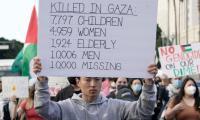It is said that 10 economists in a room would have 11 different opinions about an economic issue.The reason is very simple: economic indicators are like pieces of a jigsaw puzzle. The picture of the economy one would draw depends on which pieces of the jigsaw puzzle one has. Moreover, economic policies are never ‘absolutely’ good or bad; there are tradeoffs for each policy. Thus, again opinion about the state of economy would vary depending on whether a particular analysis focuses on winners, losers, or both.
The opponents of the current government in their white paper released on the state of the economy under the PTI’s 16 months have termed it a complete disaster. To them, the “current government has hurt Pakistan’s poor with 12.7 percent inflation and endemic unemployment. It is unable to boost up large-scale manufacturing. [The] increase in the prices of electricity, agrochemicals and fertilizers due to the policies of the current government has negatively affected agriculture”. They are also critical of the record increase in debt and liabilities during the last 16 months of the current government — and the list goes on.
Then we have the official version on the state of the economy. The current economic managers are quite satisfied with their achievements so far. They have a long list to celebrate. The IMF’s first review went well. Moody’s has upgraded Pakistan’s credit rating. Pakistan’s Ease of Doing Business ranking has improved by 28 points and so is Pakistan’s ‘Global Hunger Ranking’ (based on data till 2018). They also managed a current account surplus (for the month ending October 2019) after a long period of deficit. Moreover, they are quite comfortable with the Net International Reserves (usable foreign exchange reserves, and one of the binding targets of the IMF). Thus, to them the economy is all set to take off.
Between the above-mentioned two extreme opinions lies the true picture of the economy — which is neither too good, nor too bad.
The bad news is that the policy to curb imports is affecting the FBR revenue to be collected at the import stage and has also resulted in an increase in the price of raw material for some industries. However, the good news is that the said policy is leading to import substitution. Local alternatives for many of the consumer items have now started appearing in the market.
At the export front, we are chronically constrained by a narrow export basket and limited export destination. The bad news is that we could only export less than $300 million against a duty/quota free export window of $1 billion that China offered us for 2019 (before the next phase of free trade agreement with China becomes operational).
Fortunately, after a long stagnation, export of some items such as readymade garments and cement is showing signs of recovery. Likewise, there is mixed progress on three major contributors of fiscal deficit — energy circular debt, loss-making public-sector enterprises (PSEs), and narrow tax base.
The good news is that we have surplus energy today, for which due credit should be given to the PML-N for taking steps to overcome the prolonged hours of power outage, and for importing LNG. The bad news is that the energy inducted during the last five years was expensive and led to further accumulation of energy circular debt.
Further bad news is that unaddressed energy circular debt can take us back to the times of 2011-12 when people were longing for a few hours of uninterrupted electricity supply to charge their UPS batteries. To avoid this, consumers, barring lifeline consumers, would have to bear the brunt of electricity tariff hike and the same is true if one wants to have uninterrupted supply of gas (especially when expensive RLNG is choking our transmission system).
The good thing in this tough situation is that although there have been tough decisions (tough both for the people of Pakistan and for the government), yet the current government is on the right track to curtail accumulation of circular debt.
The bad news is that, like its last two predecessors, the current government is also unable to implement a revival plan for loss-making public-sector enterprises (LPSE). The good news on LPSE is that the government is not hurriedly throwing them away (thus avoiding any scandal of selling those units below the value of their real-estate assets).
The good news on revenue collection is that, with the help of technology (FBR and NADRA Taxpayer’s portals), tax collectors now have access to most of the information through which tax evaders can easily be identified and chased to expand the tax base. The bad news is that, despite this wealth of information, the FBR has yet to show substantial action against tax evaders.
There is mixed news on the investment front as well. The State Bank is able to attract foreign investment in treasury bills and is planning to generate $3-5 billion by auctioning T-bills by June 2020. The bad news is that the interest rate on such investment is pretty high. Moreover, investment in T-bills is considered hot money that can quickly move out. However, the good news is that, to improve its net international reserves, the SBP is not buying dollars from open market thus exchange rate is stable. Another positive outcome of this strategy is that it is providing a space for private credit by commercial banks.
The bad news is that domestic investors have halted their investment decisions for the time. Part of the reason for that is that the cost of doing business has increased due to inflationary pressures, depreciation of the value of the rupee, and high interest rate during the last 16 months. Another reason is the current drive to transit from an undocumented to a documented economy. The good news is that the documentation of the economy if pursued consistently would not only help Pakistan avoid getting blacklisted from the FATF but also help in the expansion of the tax base.
The bad news is that the Consumer Price Index (or food-fuel inflation) is very high and one of its major contributors was perishable food commodities. However, the good news is that prices of perishable food commodities are coming down. It is expected that in another two months the CPI will come down, which this would also bring the State Bank’s policy rate down.
The bad news is that macroeconomic stability under an IMF programme is achieved through contractionary policies which destabilize microeconomy of the masses. The good news is that for the first time one of the programme’s quantitative targets include spending on social protection. The government is bound to spend an agreed amount for providing relief to the poorest among the poor under this programme.
Having said that, most of the above-mentioned good and bad news is normal when a country is in an IMF programme. The worrying news is that large anti-government demonstrations, some peaceful and some not, have taken place in recent weeks in countries on every continent — Algeria, Bolivia, Britain, Catalonia, Chile, Ecuador, France, Guinea, Haiti, Honduras, Hong Kong, India, Iran, Iraq, Kazakhstan, Lebanon, and Pakistan.
The good news for Pakistan is that, unlike many other parts of the world, inflationary pressures have never led to any major anti-government protests. We the people of Pakistan are not only resilient but optimistic by nature too.
To me, the real bad news for Pakistan is that on human development ranking 2019 (data collected till 2018) we fell one notch more and stood at 152nd position out of a total of 189 countries. Another bad news is that on the gender parity ranking we stood at 151 out of 153 countries.
The challenge for the current government is not merely to achieve macroeconomic stability (or even meso and micro economic stability, for that purpose). To me the major challenge facing Imran Khan’s government is to keep the optimism among fellow Pakistanis alive. That would require thinking beyond quantitative targets and focusing on improving our performance on the human development and gender gap indices. Let’s see if the government can live up to this challenge.
The writer heads the Sustainable Development Policy Institute
Twitter: @abidsuleri
Earth Day protests carry a vital message that is relevant 365 days a year. — AFP File Earth Day is celebrated every...
People walk along a market in Lahore on May 17, 2023. — AFP/FileMany of us had hoped that the general election...
Packs of freshly printed $20 notes are processed for bundling and packaging at the US Treasury's Bureau of Engraving...
People stand in line up as election officials check their ballot papers during voting general election at a polling...
Women show their voter identity cards as they stand in a queue before casting their votes in Agartala. — PTIThe 18th...
Former prime minister Imran Khan. — Instagram/ imrankhan.ptiAn old saying has it that “when you dance with the...







